Backlund Ecology participates in National and International Projects and in Networking and has Experience with Applications, Management, Reporting and Presentation or taking part as a member of Steering Groups
Projects under preparation:
After many years cooperating with Wostman Ecology AB to develop a system unit contributing to solve problems related to pipe and sewer transport from more concentrated dry material in “wastewater” stream transport after ultra low flush toilets and other water saving devices we are now to test a “EcpoTipper” prototype.
Childrens play and learning
(Project in danish)
Selected projects:
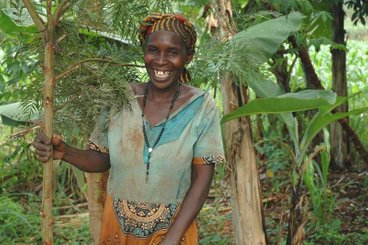
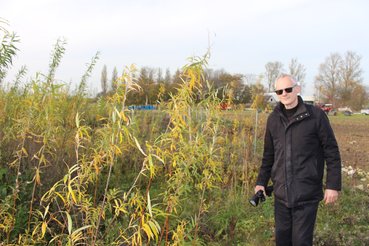
(Project in danish)
Building and testing a Moon Habitat in Quaanaaq North Greenland LUNARK Building and testing a Moon Habitat in Quaanaaq North Greenland
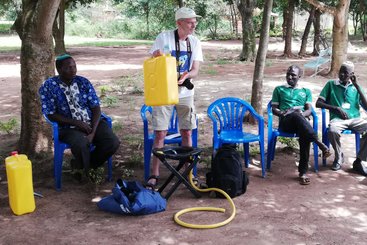
October 2019: Arne is for 2 weeks travelling around in Eastern Uganda to teach "Ecological Sanitation" and to start up projects PeeCycling human urine to be used in school gardens and by subsistence farming on small plots in the countryside.
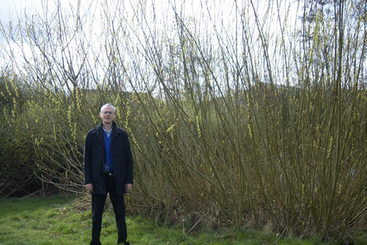
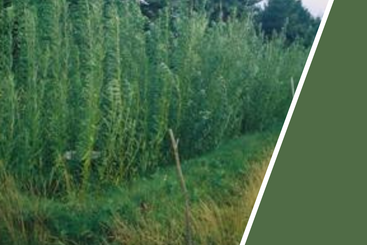
Assessment regarding Zero Discharge Willow Wastewater Evapotranspiration Systems regarding Technology and Economy. Project & Consultancy Work for Niras A/S and Municipality Næstved 2010 - 2011. (In Danish)
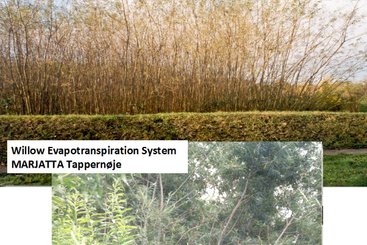
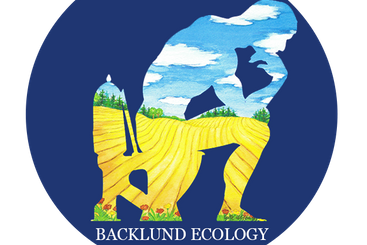
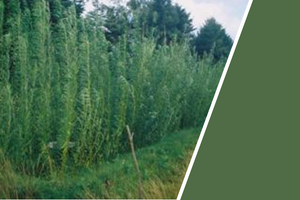
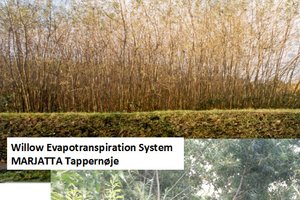
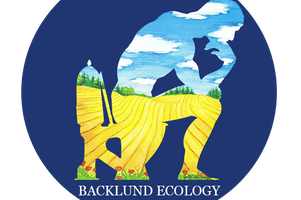
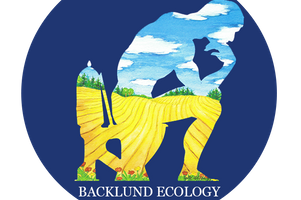


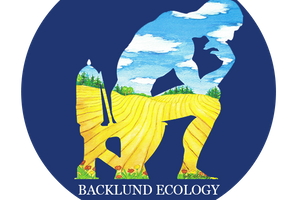
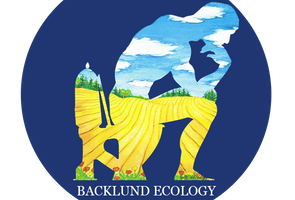
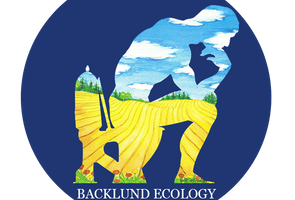












Appendix to Wastewater Planning for Klinteby/Karrebækstorp. Assessment regarding Zero Discharge Willow Wastewater Evapotranspiration Systems regarding Technology and Economy. Project & Consultancy Work for Niras A/S and Municipality Næstved 2010 - 2011. (In Danish)
Zero Discharge Willow Wastewater Evapotranspiration Systems compared to conventional wastewater treatment systems for rural houses as foreseen in the approved Appendix to Current Wastewater Plans in Municipality Naestved from September 2009.
The project was carried out for NK-Spildevand A/S in a cooperation with Nielsen & Risager A/S in 2009 - 2010 and reported in NK-Spildevand A/S, Nielsen & Risager A/S, Backlund ApS 2010: Statement - Zero Discharge Willow Evapotranspiration Systems as an alternative to the planned wastewater sewage in "Appendix to existing Wastewater Planning" Naestved February 2010. (In Danish)
Project regarding sustainable sanitation in Greenland. Lecture, teaching, exhibition, installing and testing a diverting waterless Separett Villa 9010 toilet with reporting at Sisimiut Greenland in 2006.
EU project Helsingborg INTERREG - Handbook about urine diversion.
Arne Backlund contributed from 2004 - 2005 with knowledge and experience among others based on many projects worked out for Miljøstyrelsen (The Danish EPA) from 1998 - 2005.
“Kolon-Project” COWI Norway - Dewatering and composting of sludge.
Tore Østeraas, COWI 2005: Kolon-prosjektet - Anleggstyper testet i Kolon-prosjektet. (In Norwegian)
Arne Backlund contributed from 2004 - 2005 to the project among others with gained knowledge from 1998 - 2003 in the below project “The National Danish Environmental Protection Agency - Project M226-0028 Composting and Maturing of Human Feces and Toilet Paper Contained in Drained Blackwater.”
The National Danish Environmental Protection Agency - Project M226-0121 Improved Knowledge Regarding Diverting & Separating Technology Enabling Usage and Energy Resources and Nutrients in Human Urine and Human Feces.
The project was initiated and carried out 1998 – 2002 by BACKLUND with Arne Backlund as project manager. Basis for the project is that diverting toilet technology contains interesting system components for separate collection of urine and faeces. The system components shall, however – be able to collect the residuals in a function stable way and in a concentration suitable for treatment in e.g. biogas – and wet composting plants as well as for use as fertilizer in agricultural production.The project reflects on the historical development away from the use of diverted human residuals as being merely an expressed reflex out of a removal paradigm rather than a reflected development regarding recirculation of nutrients and organic material to agriculture. There is a need for qualitative modernisation within wastewater handling. New technologies as well as new concepts are needed to design the wanted human fertilizer products. There must be a readiness in the social functional systems and institutions to eventually redesign structural conditions like regulative and economical management for this process when required.Four selected investigation areas are addressed. The first concerns investigation and consideration regarding establishment of a source diverting vacuum toilet in a housing area in Hannover, Germany with 32 source collecting vacuum toilets. The second is investigating the efficiency to separate faeces and paper from water after using source collecting or source diverting water-flushing toilets. The third area focuses on the functioning and running of waterless urinals as an opportunity for collecting concentrated urine. The fourth concerns risks of blockages in the urine collection system of source diverting double flushing toilets and possibilities of avoiding or solving these problems. The investigations, methods and results are described in a report and in articles.
The National Danish Environmental Protection Agency - Project M226-0024 Vacuum Toilets and Treatment of Collected Material in Biogas Plants or by Wet Composting.
The project was initiated and carried out 1998 – 2002. In the project in the district of Nysted on Lolland, Denmark, two vacuum toilets of a new design were established in 2000. The toilets were installed as part of a project meant for illustrating the possibilities of recycling concentrations of "black" wastewater (wastewater from water closets) for agricultural purposes.The project collected experience from the new toilet systems for detached houses and from earlier common vacuum systems in summer cottage areas on Lolland and Falster.The new vacuum toilet systems for detached houses, which are continuously developed, have very low water and electricity consumption. A great deal of the operating troubles connected to the earlier vacuum systems has been surmounted. Examinations indicate that vacuum toilets make it possible to collect a product applicable for co-treatment at a biogas and wet composting works.The project also included experience from our neighbouring countries. Storstrøm County has initiated the project in cooperation with BACKLUND. The investigations, methods and results are described in a report and in articles.
The National Danish Environmental Protection Agency - Project M226-0029 Collection, Storage and Fertizing with Human Urine from the Homestead Moen Museum.
In order to clarify how urine may be recycled in Denmark, the Møn Museum/the "Museumsgården", The Green Guide of Møn, Storstrøm County and BACKLUND ( A & B BACKLUND ApS) has initiated the project "Collection, storage and application of urine from the Møns Museumsgård". Together they developed and planned the project. The project was carried out from 1998 – 2002.
The composition of the wastewater of the "Museumsgården" is a high quantity of urine and a small quantity of an undistinguished substance of wastewater, which makes the separation of urine by way of source segregation toilets and the utilization of nutrients reasonable. Contrary to a private house, there will be many different users of the toilets at a museum. This fact made it possible to test a diverting wastewater system under somewhat difficult circumstances. One of the purposes of the project was to collect experience in the installation and use of a source diverting toilet system, including a waterless urinal, at the "Museumsgården" and to compare this to experience from Sweden. Another purpose was to examine the constituents of the urine, including whether the contents of nutrients, heavy metals, micro organisms and organic substances alien to the environment will change during storage.Moreover, the collected urine was compared to other urine mixtures and fertilizers on the basis of these parameters.The toilet system of the "Museumsgården" was established in April 1999. Experience from the installation and operation has been collected during the opening seasons of 1999 and 2000, and partly during 2001. The investigations, methods and results are described in a report and in articles.
Backlund, A., Holtze, A. 2002: DIVERTING TOILET SYSTEMS – QUALITY OF COLLECTED URINE MIXTURE COMPARED TO OTHER ORGANIC FERTILIZERS DIVERTING.
Proceedings of KALMAR ECO-TECH´01 - Leachate and Waste Water Treatment with High-Tech and Natural Systems. The 3rd international conference on the establishment of cooperation between companies/institutions in the Nordic Countries in the Baltic Sea Region November 26 to 28, 2001, Kalmar, Sweden. RVF´s UTVEKLINGSSATSNING DEPONERING Rapport nr. 2 2002.
Holtze, A., Backlund, A. 2003: Success with diverting toilet system at the Møn Farmstead Museum. The Danish Environmental Protection Agency. Denmark. Article in "New Knowledge" in Danish with an English summary.
The National Danish Environmental Protection Agency - Project M226-0028 Composting and Maturing of Human Feces and Toilet Paper Contained in Drained Blackwater.In the autumn of 1998 The County of Storstrøm in a co-operation with BACKLUND and a family in the district of Stubbekøbing initiated the project "Composting and maturing of human residual products contained in drained "black" wastewater" in order to illustrate how human residual products, through composting, can be recycled in Denmark. Together they developed and planned the project.One of the objects of the project was to collect experience on establishing and using a source diverting compost toilet system with water flush in a one-family house. Another object was to collect experience on using a source uniting compost toilet system including many users, experience from both operation staff and users. The intention was moreover to survey the composting process in the two toilet systems, e.g. in order to assess the quality of the compost material.In the autumn of 1998, a new wastewater system was established in Stubbekøbing. The system was built up of system assemblies, commercially available in Denmark, but not yet tested in this country. The examinations of the system have been made during the period of November 1998 till October 2001. The examination was based on interviews and supervision and included the experience gained from the installation and working of the source diversion. Furthermore measurements were made from samples from the compost of the source diverting system. The analyses focused on the examination of the functionality and stability of the systems as well as on the investigation of the content of nutrients and special micro organisms in the compost material.The investigations, methods and results are described in a report and in articles.
Holtze, A., Backlund, A. 2003: Composting and Maturing of Human Residual Products contained in Drained "Black" Wastewater". The National Danish Environmental Protection Agency. Denmark. Sustainable Urban Renewal and Wastewater Treatment no. 39, 2003. On line publication. Report in Danish with an English summary.
Holtze, A., Backlund, A. 2003: Composting - an alternative to conventional wastewater treatment in the countryside. The Danish Environmental Protection Agency. Denmark. Article in "New Knowledge" in Danish with an English summary.
The National Danish Environmental Protection Agency - Project M226-0057 Ecological Handling of Human Urine, Human Feces and Greywater in Allotment Gardens using Dry Diverting Toilets and Zero Discharge Willow Wastewater Evapotranspiration Systems.
The project is the biggest ever carried out concerning dry diverting toilet systems in allotment gardens. It was initiated by the Danish Allotment Garden Association and BACKLUND and carried out in cooperation with Danish Technological University and the municipalities Ballerup and Herlev with Arne Backlund from A & B BACKLUND ApS as project manager in the period 1998 - 2002.89 no-mix/diverting toilet systems without water flush were established to test and demonstrate organic and sustainable sanitation systems as alternatives to systems with chemicals or water flushing closets in combination with collecting tanks or sewers.Many Danish gardeners have stopped using pesticides and want to develop a more ecological behaviour also in sanitation. Water flush toilets in combination with collection tanks are very expensive resulting in economic and social problems. Trucks collecting wastewater destroys the often primitive roads. Establishing sewage is also very expensive and often resulting in different problems. Both solutions with water flushing toilets also work against the idea of allotment gardens as only being used half of the year and without some of the features known from permanent living.No mixing toilets/diverting toilets were introduced to implement ecological and sustainable behaviour with a high sanitary comfort. Participation was free for organisations and members and the choice among a range of toilets and containers were free. Information about the systems, the handling and the ideas were presented on arrangements. The participants were free to contact the project manager concerning questions. The participants were responsible themselves for mounting and running the systems. Written questionnaires played a minor role. Information about among others expectations and experiences with installation and running were collected. All participants were personally interviewed by phone or at a visit. Many of the installations were inspected.Samples of collected urine were taken from 10 allotment gardens and analysed for among others nutrients, heavy metals, organic compounds and micro organisms. The participants delivering urine were especially interviewed concerning questions relevant for the quality of the urine. Samples of faeces/composted faeces were not taken and analysed in this but in another project. The investigations, methods and results are described in a report and in articles.
Slide presentation Experiences with Ecosan in Danish Allotment Gardens and Development Projects
Larsen I., Backlund A. 2001: Ecological Sanitation - Sustainable Sanitation in Allotment Gardens in Denmark. Article in "The Hyphen" Nr. 27/2001.
The National Danish Environmental Protection Agency - Project M226-0025 Experience and Examinations from First Known Zero Discharge Willow Wastewater Evapotranspiration Systemarfaringer Established in Tappernoeje, Denmark.
Storstrøm County and BACKLUND have co-operated on a project to collect experience and to examine Denmark's earliest evapotranspiration bed with no outlet, situated in Storstrøm County. The bed has worked very stably since 1992.
The water balance has been calculated to estimate the evapo-transpiration of the bed. The content of nutrients in the wastewater, and nutrients, heavy metals and organic compounds in the soil have been analysed. Steam production of the willows has been estimated. BACKLUND is engaged in further development of the systems.The investigations, methods and results are described in a report and in articles.
Backlund, A., Holtze, A. 2002: WILLOW EVAPOTRANSPIRATION BEDS WITHOUT DISCHARGE FOR HANDLING OF HOUSEHOLD WASTEWATER AND BIOMASS SHORT ROTATION WILLOW COPPICE FERTILISED WITH NUTRIENTS FROM HUMAN URINE MIXTURE. Proceedings of KALMAR ECO-TECH´01 - Leachate and Waste Water Treatment with High-Tech and Natural Systems. The 3rd international conferance on the establish November 26 to 28, 2001, Kalmar, Sweden. RVF´s UTVEKLINGSSATSNING DEPONERING Rapport nr. 2 2002.
Holtze, A.,Backlund, A. 2002: Denmark's oldest Willow Evapotranspiration Bed works excellently. The Danish Environmental Protection Agency. Denmark. Article in "Ny Viden'' 02/2002 in Danish with an English summary.
The National Danish Environmental Protection Agency - Project FAIR-CT97-3947 Multifunctional Short Rotation Energy Willow Plantations Irrigated and fertilized with Wastewater, Sludge and Human Urine.
The project was carried out during a 4-year period (1998-2002) with financial support from the EU FAIR Programme in the shape of field trials with recycling of pre-treated wastewater and diverted human urine mixed with water within plantations of willow species specifically selected for biomass production.Experimental sites were established in Sweden (Roma), France (Orchies), Northern Ireland (Culmore) and Greece (Larissa). BACKLUND represented Denmark in the project and Arne Backlund was project manager for the urine trials on Gotland, Sweden.The experimental sites were supplied with primary effluent from municipal treatment plants (Culmore and Larissa), stored industrial effluent from a chicory processing plant (Orchies), biologically treated and stored municipal wastewater (Roma) and human urine mixture from diverting low-flush toilets mixed with water (Roma). Application rates of the wastewaters or the urine mixture were equivalent to the calculated evapotranspiration rate at each site. Wastewaters were also applied up to three times this value to evaluate any possible negative effects.
Estimations and evaluations were carried out mainly concerning: biomass growth, potential pest and diseases of the plantations, plant water requirements, fertilization effects of the wastewater, plant uptake of nutrients and heavy metals from applied wastewater, possible soil or groundwater impact, sanitary aspects, and potentials for removal in the soil-plant filter of nutrients and biodegradable organic material from applied wastewater.
The results clearly indicated that biomass production in young willow plantations could be enhanced substantially after recycling of wastewater resources. The impact on soil and groundwater of nutrients (nitrogen and phosphorus) and heavy metals (copper, zinc, lead and cadmium) was limited, even when the application of water and nutrients exceeded the plant requirements.Also, the soil-plant system seemed to function as a natural treatment filter for pre-treated (primary settled) wastewater, with a treatment rate fully comparable to a tertiary effluent quality with regard to biodegradable organic material and eutrophying nutrients (nitrogen and phosphorus). Introductory analyses of the costs of a wastewater irrigated willow plantation for bio-fuel production indicate that the benefits of the wastewater treatment per se appear to be greater than the benefits from the increased production of wood chips. The risks of contamination via faecal microorganisms of animals and humans seem possible to reduce or eliminate if proper precautions are taken.The gathered opinion from the members of the multidisciplinary project team is that the concept of recycling wastewater or fractions of wastewater within willow plantations for combined energy production and wastewater treatment would be worth developing on a wider scale. Experiences from few full-scale facilities in Sweden are well in accordance with the findings outlined in this project.The fact that wastewater could be treated at reasonable costs might encourage the municipal sector as well as the energy and agricultural industry in Europe to further expand the concept with increased willow plantation areas as a consequence. This would increase the opportunities for an over all better environment for generations to come. The investigations, methods and results are described in a report and in articles.
Backlund, A., Holtze, A. 2002: WILLOW EVAPOTRANSPIRATION BEDS WITHOUT DISCHARGE FOR HANDLING OF HOUSEHOLD WASTEWATER AND BIOMASS SHORT ROTATION WILLOW COPPICE FERTILISED WITH NUTRIENTS FROM HUMAN URINE MIXTURE.
Proceedings of KALMAR ECO-TECH´01 - Leachate and Waste Water Treatment with High-Tech and Natural Systems. The 3rd international conferance on the establish November 26 to 28, 2001, Kalmar, Sweden. RVF´s UTVEKLINGSSATSNING DEPONERING Rapport nr. 2 2002.
Project group FAIR5-CT97-3947, 2003: Short-rotation Willow Biomass Plantations Irrigated and Fertilised with Wastewaters - Results from a 4-year multidisciplinary field project in Sweden, France, Northern Ireland and Greecesupported by the EU-FAIR Programme.
The National Danish Agency of Environmental Protection. Denmark. Sustainable Urban Renewal and Wastewater Treatment no. 37, 2003. On line publication. Report in English. http://www2.mst.dk/udgiv/publications/2003/87-7972-744-1/html/default_eng.htm
Backlund, A. 2004: The Wastewater Is Treated While The Willow Grow. The National Danish Environmental Protection Agency. Denmark. Article in "Ny Viden" 01/2004 in Danish with an English summary.
The National Danish Environmental Protection Agency - Project M227-0029 Survival of Indicator Organism in Composting Toilets and M227-0030 Reduction of Pathogens by Simulated Central Composting of Human Feces.
The project is carried out in a co-operation between The Research Institution for Wood and Landscape, The Royal Veterinary and Agricultural University from 2000 - 2003.
13 composting toilet systems are investigated, 7 in Denmark and 6 in Sweden. 5 of the systems are big batch composting systems and 8 are big continuous systems. The user experiences with the systems and their opinions are gathered in an investigation. The function and ability to reduce pathogens are investigated through measuring of temperature and microbiological analysis from the compost material. The investigations, methods and results are described in a report and in articles.
Installing, testing and demonstrating ecological sanitation solutions together with Stadtwerke Hannover in Hannover Germany from 1997 - 2005
Backlund Ecology participates as an advisor and supplier to the projects among others also related to the world exhibition EXPO 2000 in Hannover.
Info Öko-Technik-Park Hannover
Establishing and testing an On-Site Zero Discharge Willow Wastewater Evapotranspiration System together with Stadtwerke Hannover in Hannover Germany from 2001 - 2005
Establishing and testing diverting ultra low flush EcoFlush toilets in 10 apartments and 5 3m3 urine collection tanks at Hyldespjældet, Albertslund Denmark from 1998 - 2001.
BACKLUND participates in the project as an advisor and delivers toilets and urine collection tanks.
Exhibition at Moen Farmstead in 1999 in connection with the project M226-0029 Collection, Storage and Fertilizing with Human Urine from the Homestead Moen Museum.
BACKLUND contributes with knowledge and ideas to the exhibition. Based on our input the graphic designer Lotte Hilden designed the exhibition poster with the drawing turned into our new logo. We are so thankful to Lotte Hilden for this.
“Kooperationsmodell Märkische Schweiz Germany”
Supplying wastewater treatment plants, sewers, wastewater treatment and water supply for many municipalities east of Berlin Germany through establishing a public-private company.
Kooperationsmodell Märkische Schweiz
Water supply and wastewater project Märkische Schweiz Germany
Establishing willow huts and willow tunnels to play and to learn in children care in Stadt Halle Germany from 1990 - 1994
A cooperation with the mayor in Stadt Halle regarding establishing willow huts and tunnels as a pedagogical Regio Emiliano project in children institutions in the town



© Copyright 2021. All Rights Reserved.